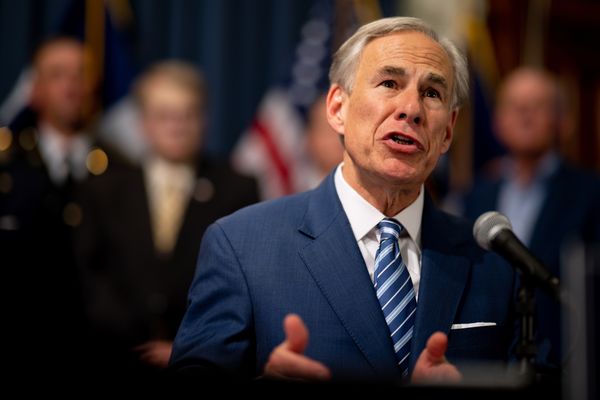
Protesting on the streets had always seemed risky for Zhu, even as a Chinese student in the United States, so she had never attended one before. (She asked to use a pseudonym for this piece.) But last Friday night she attended her first demonstration, near the gate of Boston’s Chinatown, where a small marble memorialising the 1989 Tiananmen Square massacre stands.
About 200 mostly Chinese people gathered to commemorate the lives lost in an apartment fire on November 24 in Urumqi, the north-western Chinese city where Zhu’s grandparents had been under a strict lockdown for more than three months. The Urumqi fire inspired anti-lockdown protests across China, which helped spark a wave of policy changes that have severely weakened the zero-COVID regime.
One of the earliest and most prominent demonstrations occurred on Shanghai’s Urumqi Road, right across the street from the elementary school Zhu had attended.
“It feels wrong not to show up,” Zhu, a public health student from Shanghai, told Foreign Policy later. “I have the privilege to live a comfortable life here in the US, while people back home are dying from zero-COVID policies.”
Zhu is among the tens of thousands of young Chinese people in the global diaspora who have turned up at protests in solidarity after China’s extraordinary wave of protests in recent weeks. As Beijing moved quickly to clamp down on protesters on the mainland, overseas organisers staged hundreds of gatherings worldwide, according to a tally kept by activists at Citizens Daily, a network run by a handful of anonymous volunteers that focuses on pro-democracy causes in China.
Zhu’s concern for her safety is not unwarranted. The Chinese Communist Party (CCP) is known for spying on overseas students and sees the diaspora as a potential source of political unrest. Attending an anti-Beijing protest abroad could easily bring the police to the doorsteps of their relatives back home. All interviewees spoke to Foreign Policy on the condition of anonymity to protect their safety.
Seven weeks before this round of demonstrations, a protest at Beijing’s Sitong Bridge had already spurred a smaller group of overseas students into action. Peng Lifa, the lone protester now known as “Bridge Man”, hung banners in central Beijing directly criticising Chinese leader Xi Jinping’s zero-COVID policies and called for him to step down.
Although he was quickly arrested and few in China heard about the incident, overseas students put up flyers inspired by the banners on college campuses. Those flyers allowed them to raise attention to the issue without risking their safety. The wave of reactions already surprised and encouraged activists, sowing the seeds for a new round of action.
The looming threat from Beijing also forces most organisers to stay anonymous, using more secure social media platforms, such as Telegram, to coordinate their efforts within a small group. Then they post information about their protest to accounts like Citizens Daily, which has been aggregating protest information since overseas students started echoing the demands of Bridge Man two months ago by putting up flyers on university campuses.
On November 28, Citizens Daily published a list of four demands of the “A4 Revolution,” named after the blank sheets of white paper held by protesters in China to symbolise the country’s heavy censorship. The four demands — ending zero-COVID policies, releasing arrested protesters, allowing public vigils for victims, and guaranteeing constitutional rights — were adopted by many groups.
In some of the protests in China, such as the gathering on Shanghai’s Urumqi Road, there were calls for Xi to step down. But while many in the overseas movement share such views, organisers have largely steered clear of such language in their official statements, wanting to push a broader platform and avoid internal disagreements.
Pica, a student who attended a protest in Seoul, told Foreign Policy that some demonstrators at the scene disagreed with the majority there who called for Xi to step down. A small number wanted to prohibit non-Chinese people from attending the demonstration, attempting to avoid being accused of foreign intervention — a trope frequently employed by Beijing’s propaganda organs to smear dissenters.
“I am totally against this,” Pica told Foreign Policy. “Protests against authoritarianism and injustice shouldn’t exclude anyone. It should be transnational.”
For some activists, Uyghur issues were the missing piece of the protests. There has been a brutal crackdown on Uyghur freedoms and culture in Xinjiang over the past five years, and the fire on November 24 took place in a majority-Uyghur neighbourhood.
“We made it very clear that ‘end Uyghur genocide’ is part of our platform,” said Ava, a Han Chinese student activist based in Toronto whose group has staged several events since the Bridge Man demonstration, including one in front of the Chinese consulate in Toronto that drew hundreds of people.
Ava, who sees Uyghurs and Tibetans as persecuted nationalities, said the organisers are mindful that conflicts can occur between those who hold mainstream Chinese nationalist views and minority groups. But instead of shying away from the problem, her group is deliberately inviting representatives from the Uyghur and Tibetan communities to speak about their experiences at their events.
But others found the new sense of solidarity moving. In the past, Chinese students on US campuses have used intimidation tactics against their classmates from marginalised groups who tried to speak out.
According to an anonymous submission to Northern Square, another aggregation account on Instagram that has become a community for ordinary Chinese people who hold anti-Communist Party views, a Uyghur representative who spoke at a demonstration outside the Chinese consulate in New York City on November 29 said he had never seen so many Chinese nationals standing in solidarity with Uyghurs. Organisers of the event invited Uyghurs to provide personal accounts of CCP suppression in Xinjiang, which drew unified chants in support of the Uyghurs.
Zhu, the student who attended a protest in Boston that also featured Uyghur speakers, said listening to such personal accounts has inspired her to pay more attention to Uyghur causes. Despite having Han Chinese grandparents who live in Xinjiang, Zhu said she had not previously known much about the concentration camps.
Aside from Uyghurs, activists at many of these events took the opportunity to build solidarity with other oppressed groups, in and outside China.
“Women’s rights and LGBTIQA+ rights were very much highlighted,” said Ava of the events her group had organised, noting that more than half of the 18 organisers in her group are female or queer. “We always have women’s rights and queer rights speakers.”
She said it was the “chained woman” incident — when video of a woman chained by the neck outside her home in a rural Chinese village spurred public outcry this year — that prompted her to speak out more, even though her “political enlightenment” happened when she was 14. In addition, Ava said, the events also featured Iranian feminist groups, who spoke about their struggle for equality.
Yet Wu, a student in London, said attending protests as a woman can be frustrating. She estimated that more than 70% of the more than 1000 attendees at a demonstration she attended were women, yet she could still hear male speakers make offensive and sexist comments.
Despite that, hearing the chants for Xi to step down outside the Chinese embassy was still an empowering experience for Wu.
“It wasn’t my first time speaking out, but hearing the large crowd shouting … I just couldn’t help crying,” Wu told Foreign Policy. “It was so thrilling.”
Experiences like this motivated Wu to continue her activism. Recently she and her friends started an Instagram account to highlight gender inequalities in China. The account is called “We Are All Chained Women”, referring to the same event that spurred Ava, and many other Chinese women, into political activism.
As zero-COVID policies end in China, Wu and her friends are worried that many people will lose their interest in protesting. But she will be among another group of young Chinese people spread across the world, gathering again this Saturday on UN Human Rights Day.
As authorities in China take measures against student protesters, overseas organisers hope their activism could bring more safety to their allies back home.
“If we keep advocating for the release of those who are arrested and garner international pressure on to the Chinese government,” Ava said, “these people have a higher likelihood of being released early and being safer.”
While protesters abroad still face significant risks that forbid them to speak more openly, the recent protests have offered a sense of hope for many.
“If we build a stronger diaspora community,” Ava said, “we can try to support the domestic resistance better.”
Foreign Policy chose to keep the author of this piece anonymous because of concerns about their safety.







